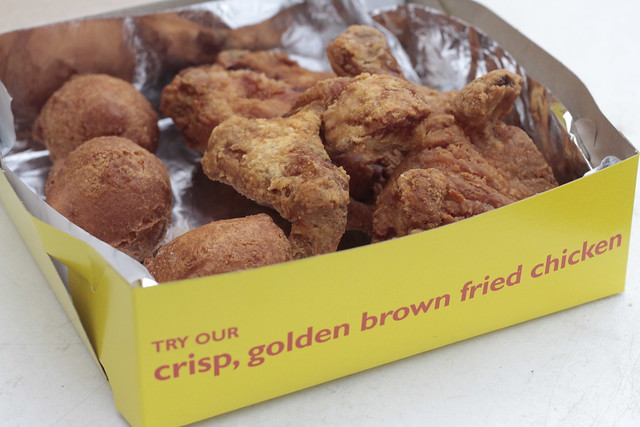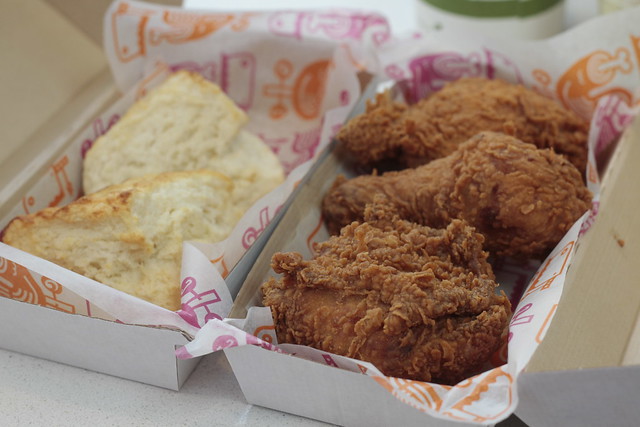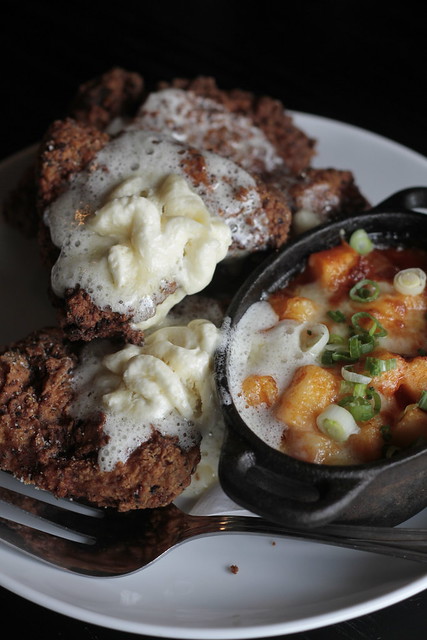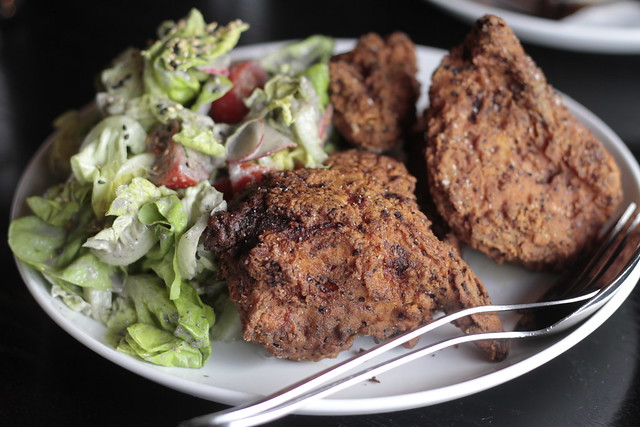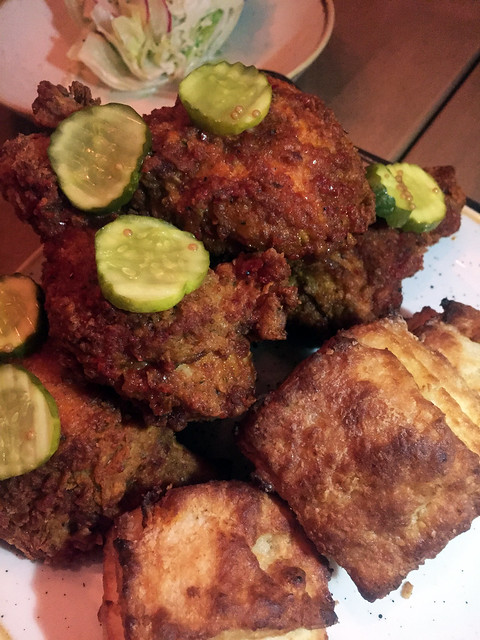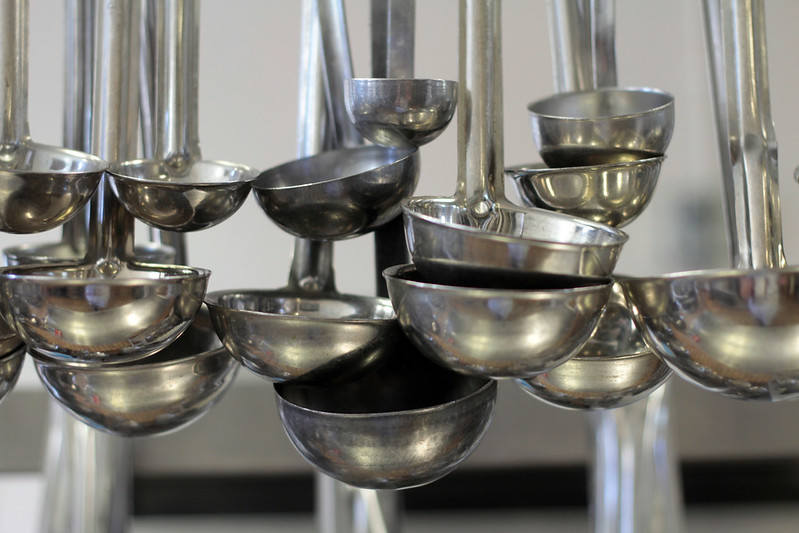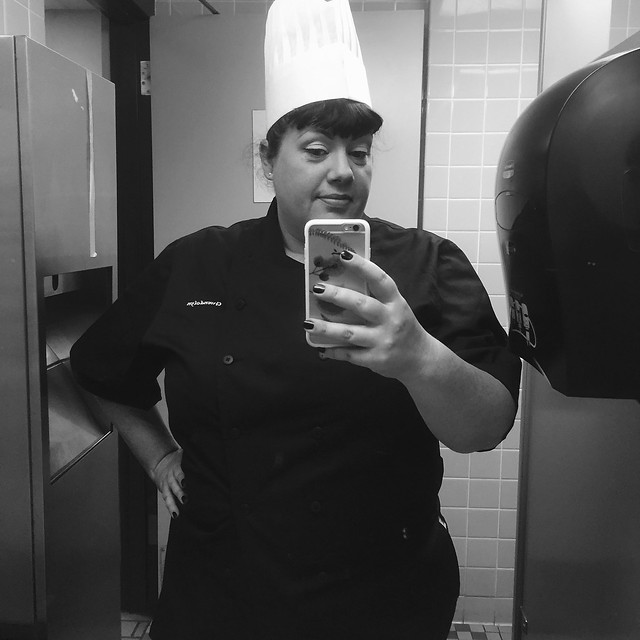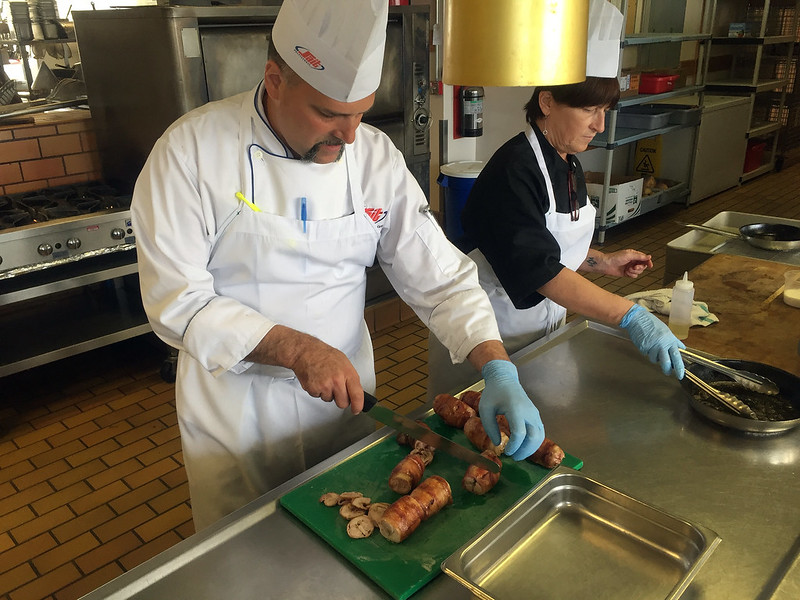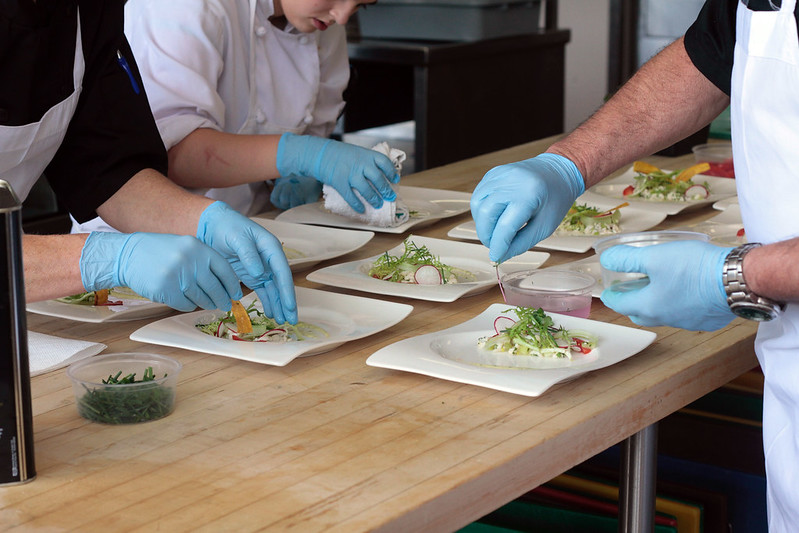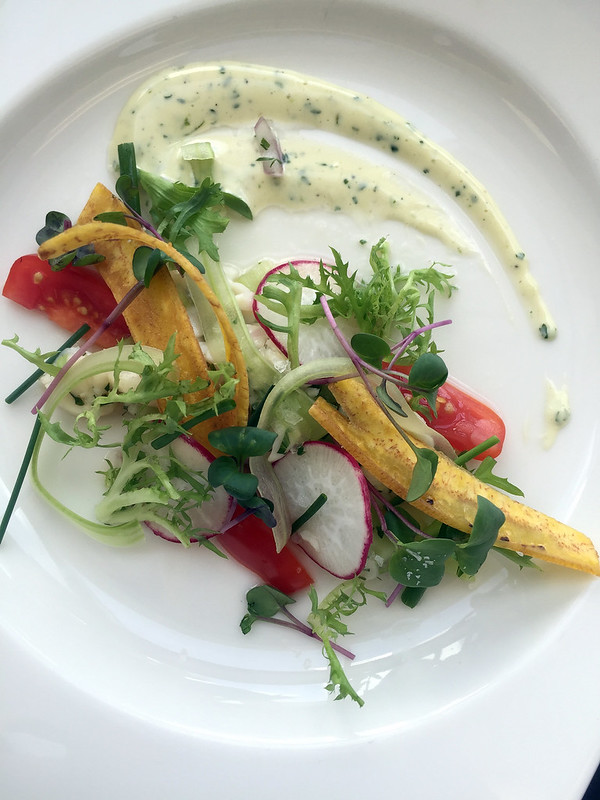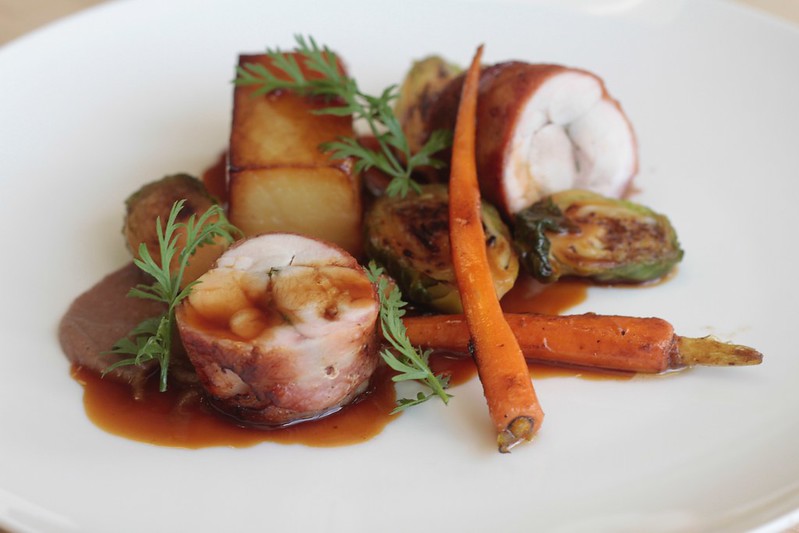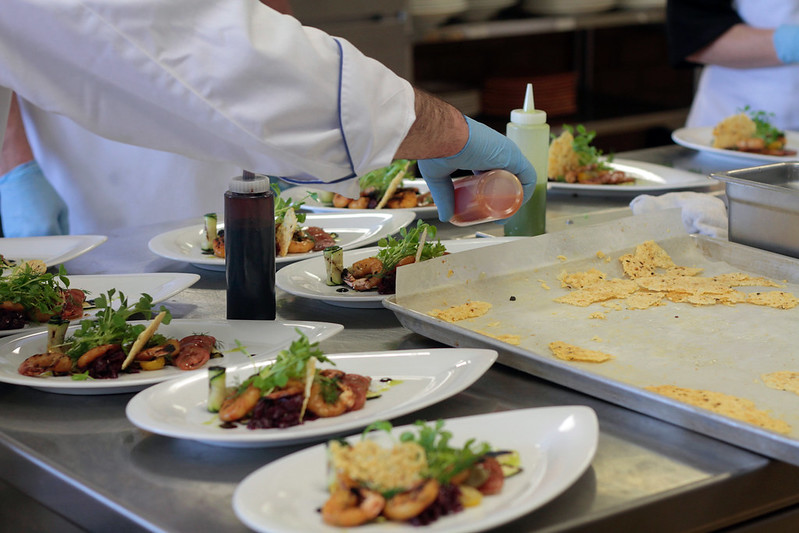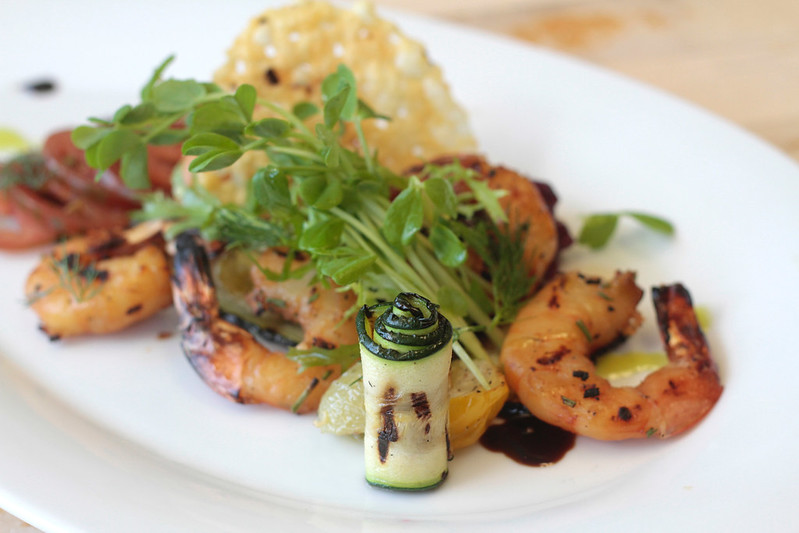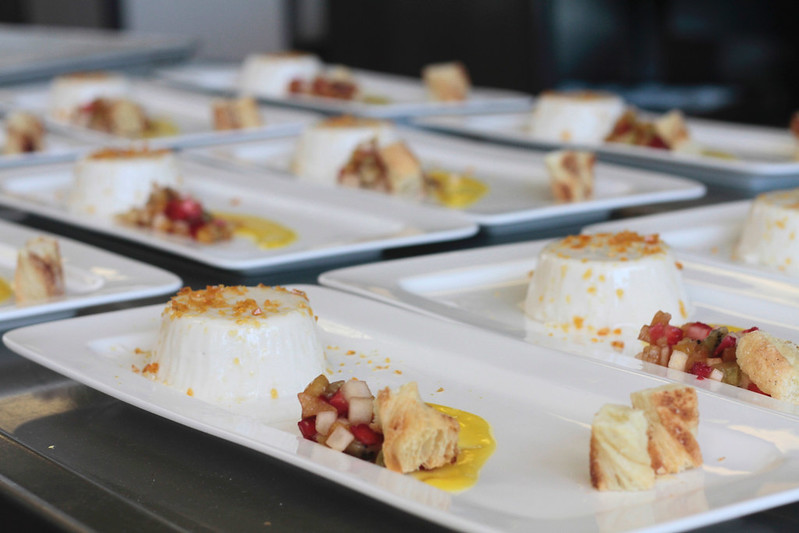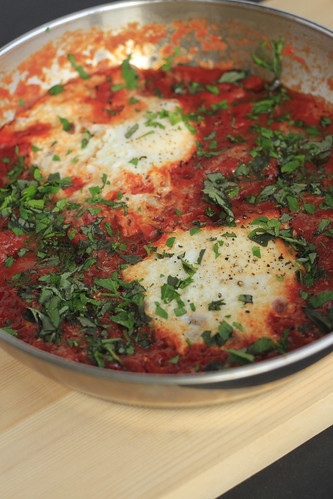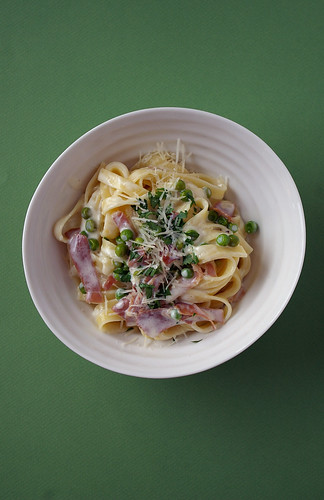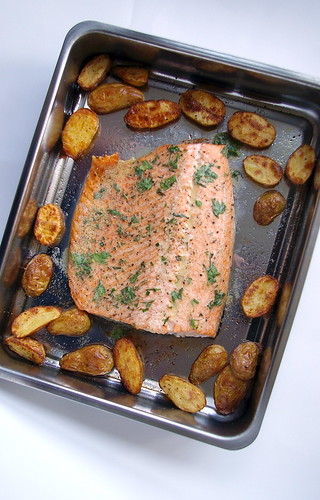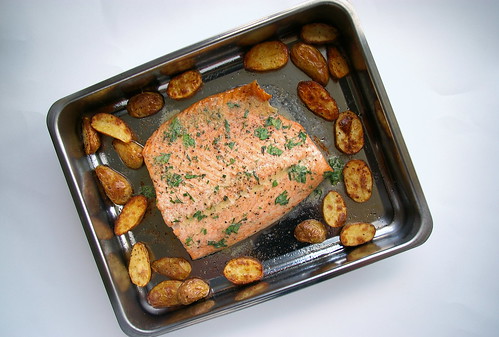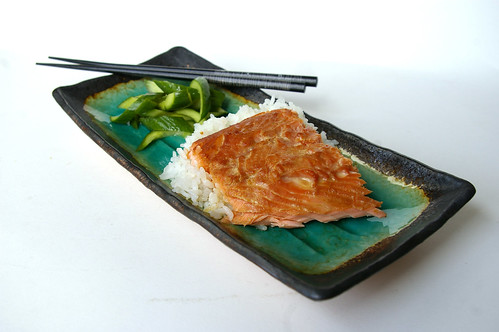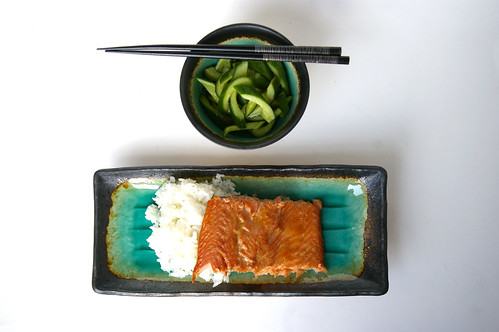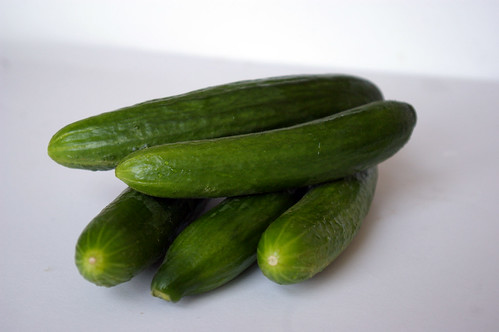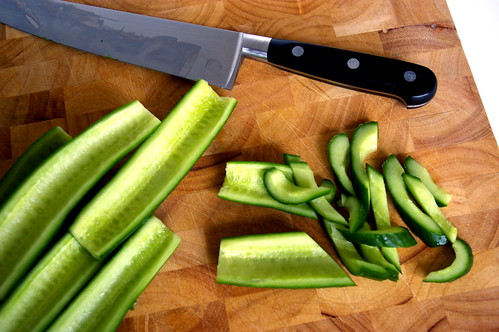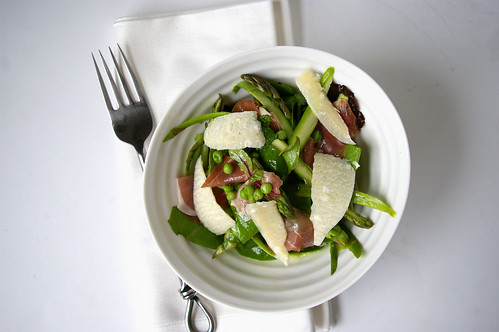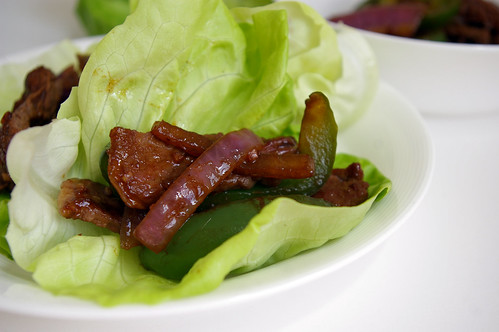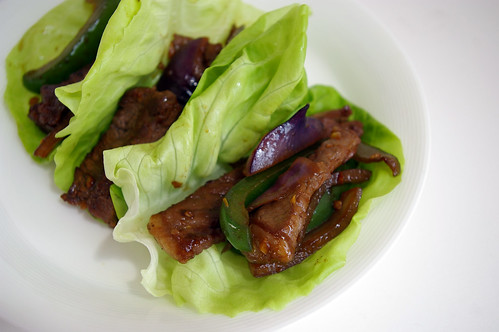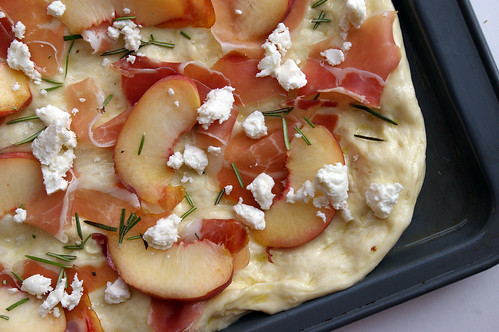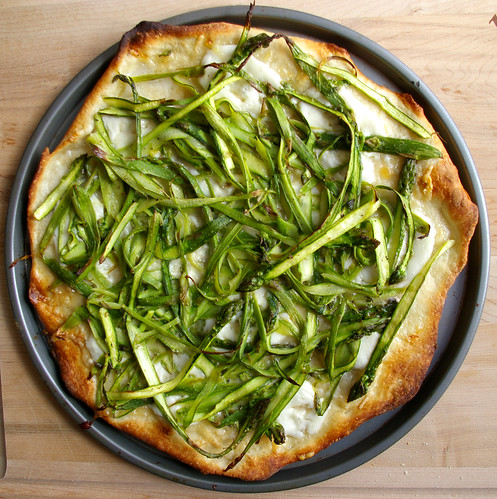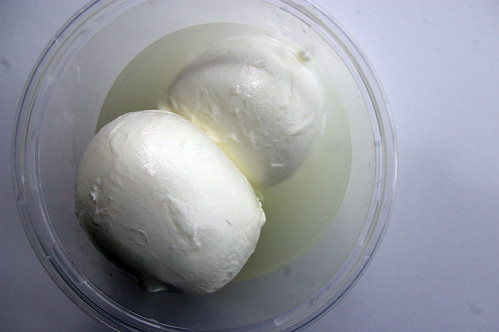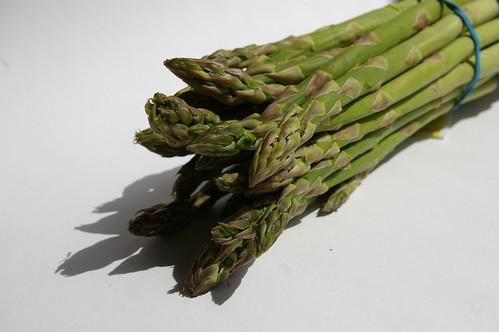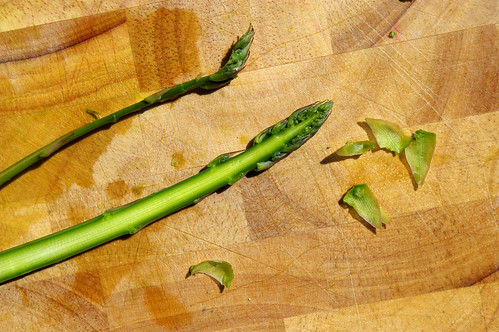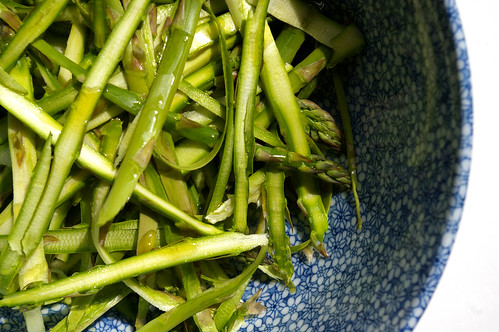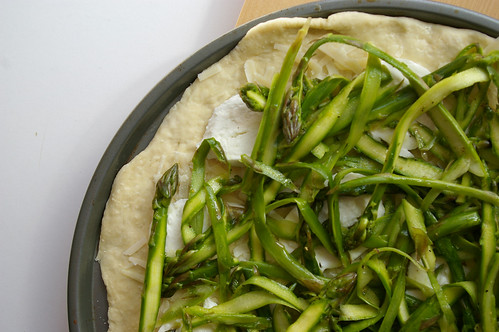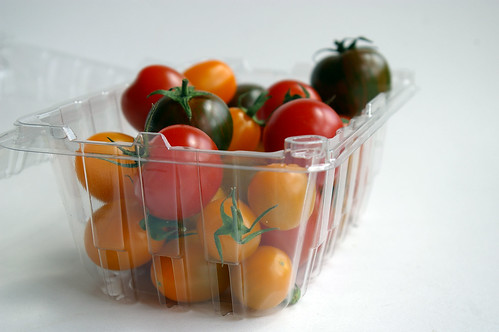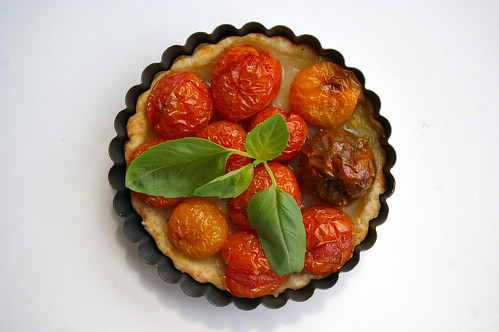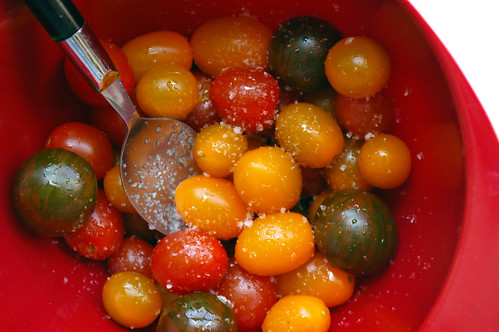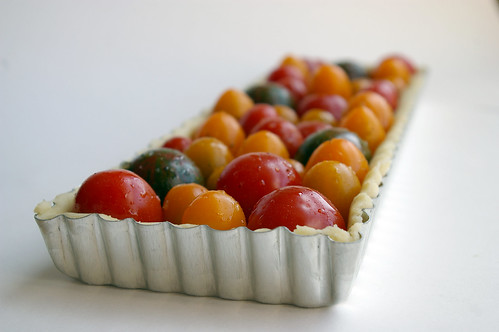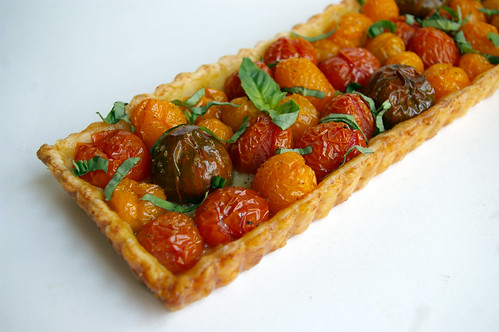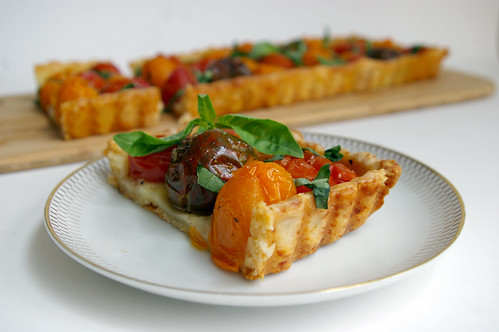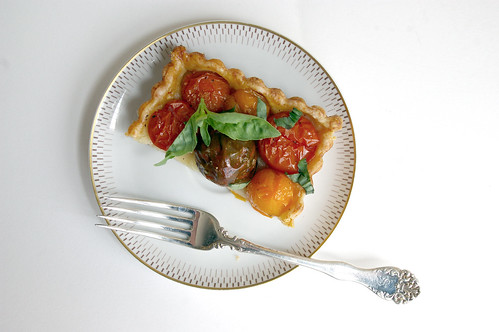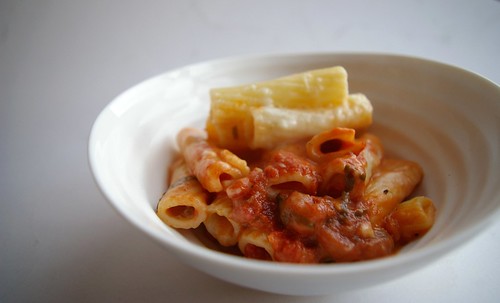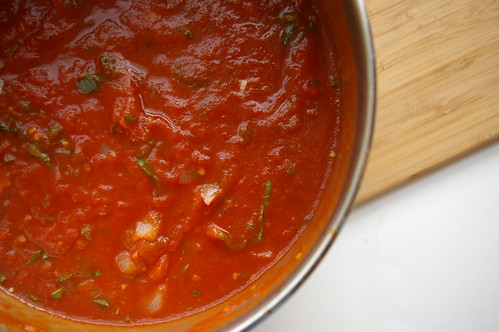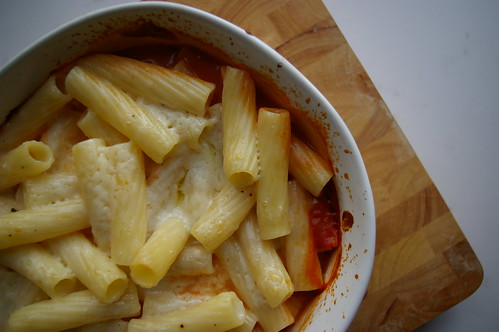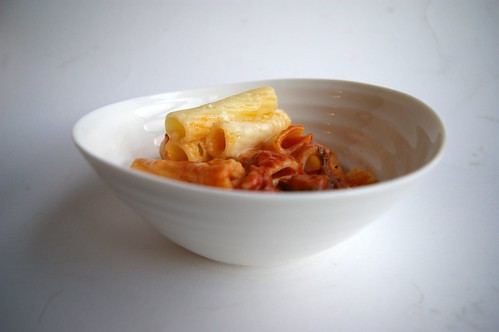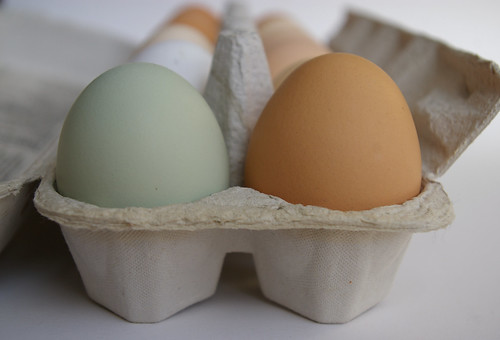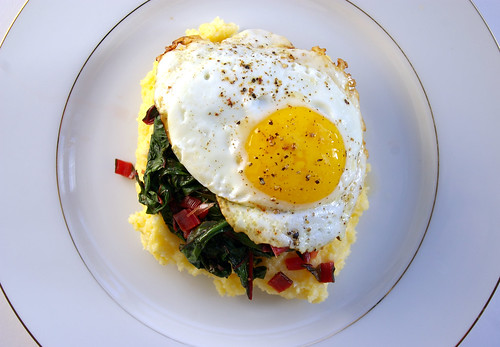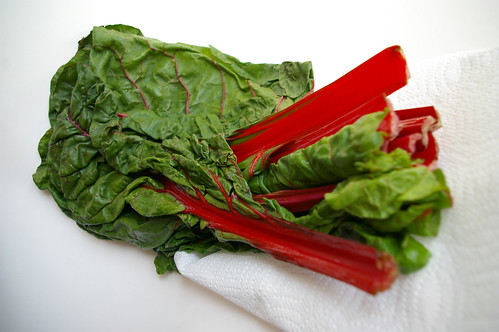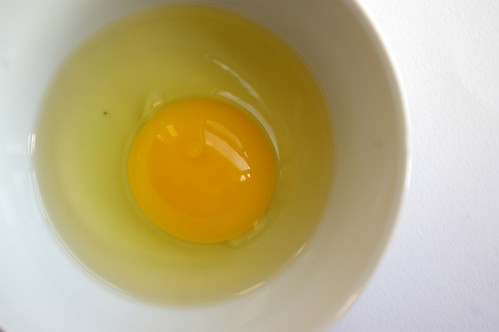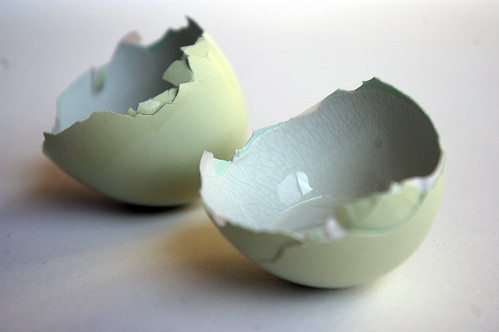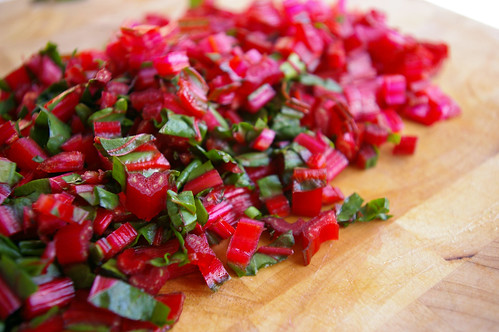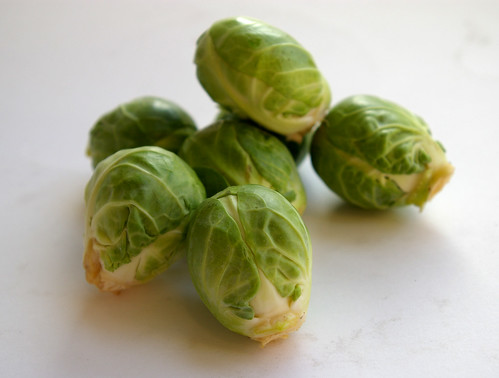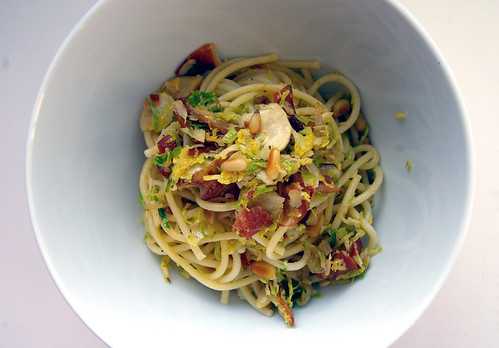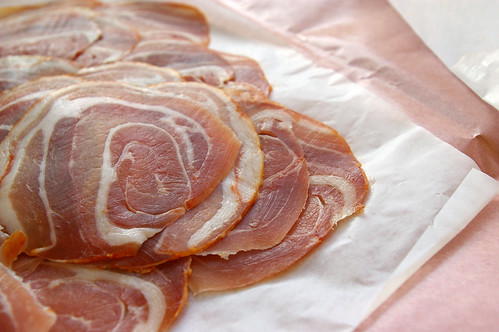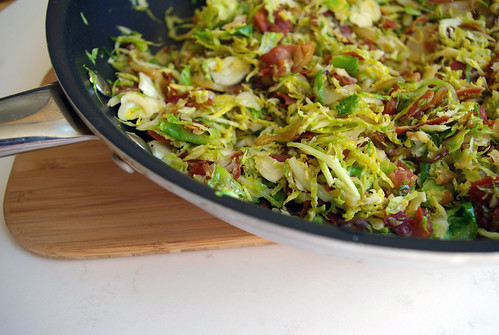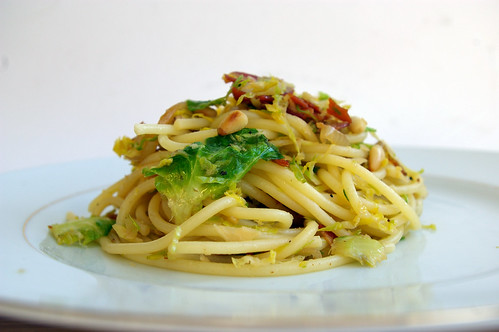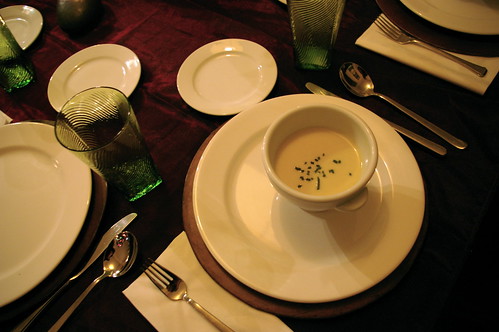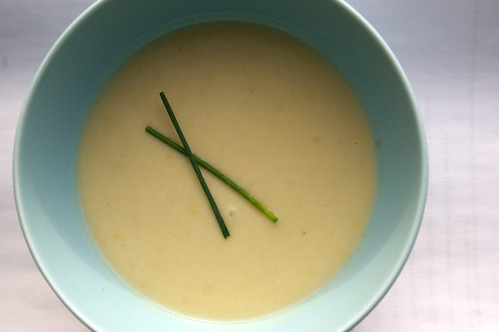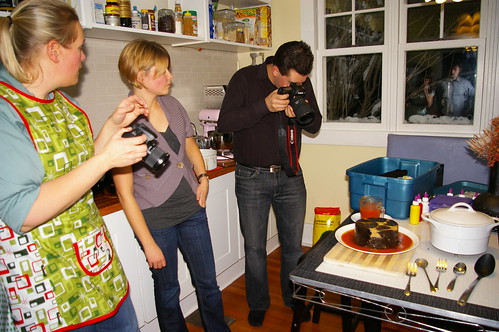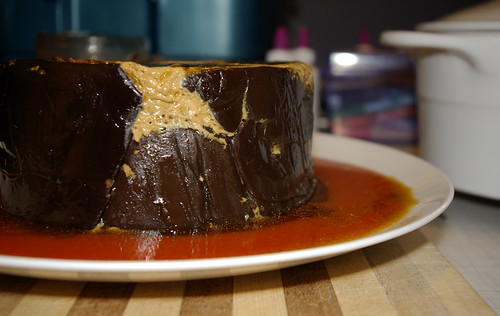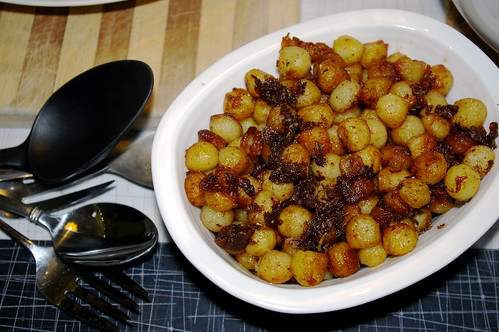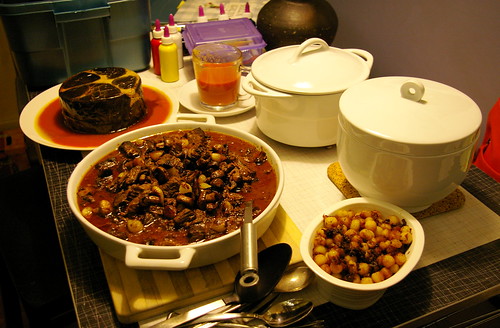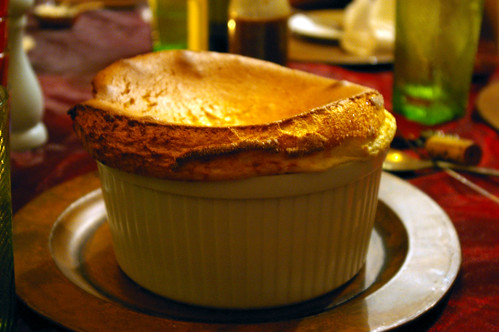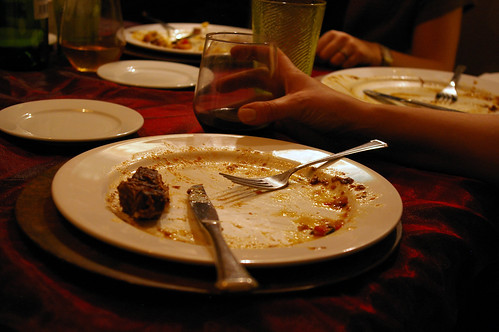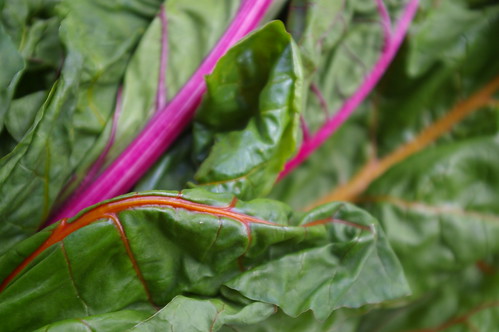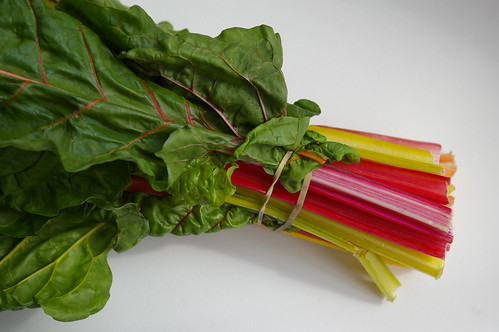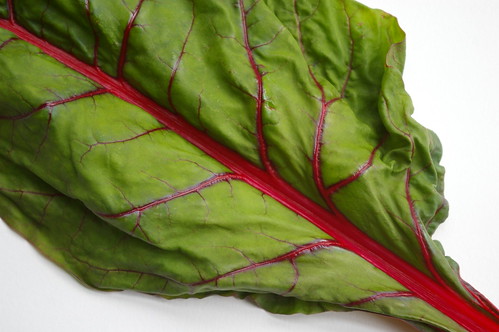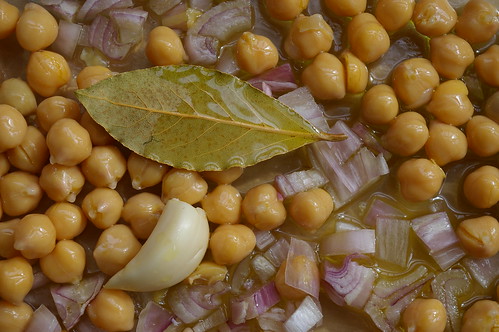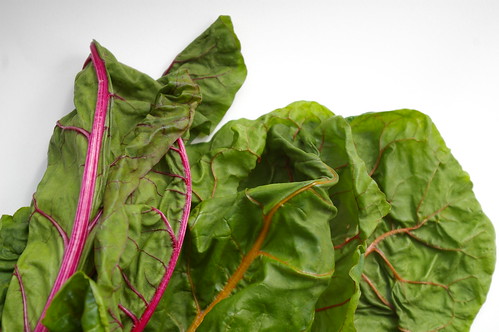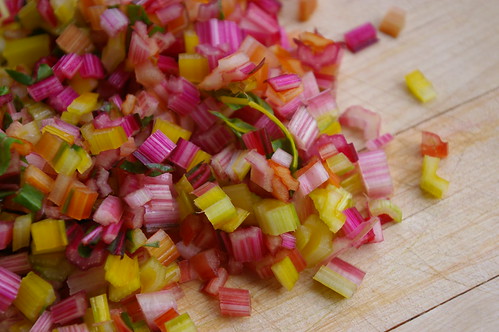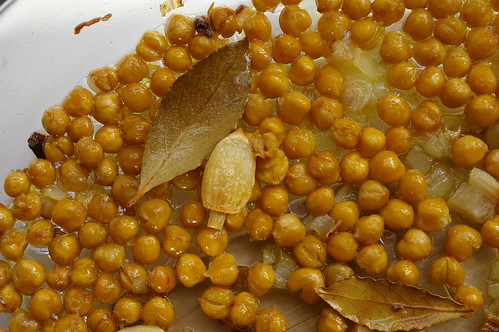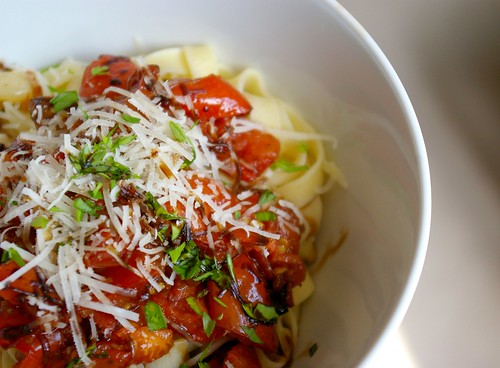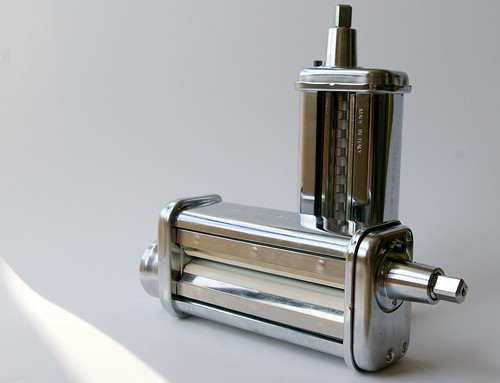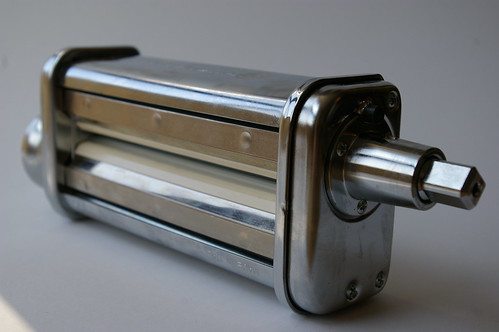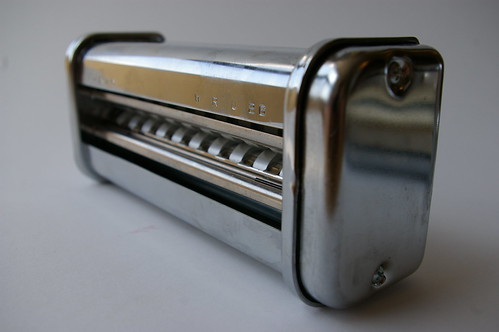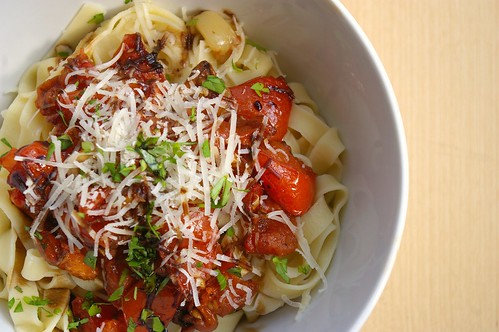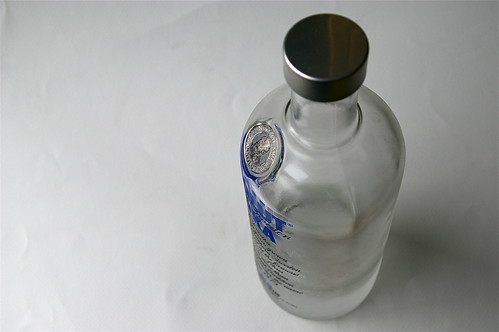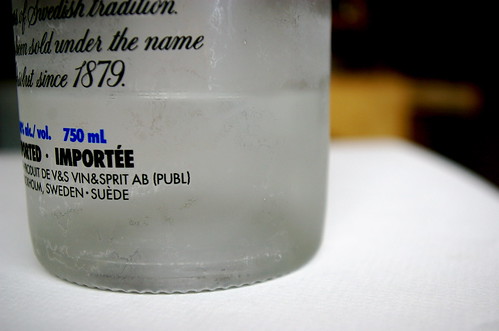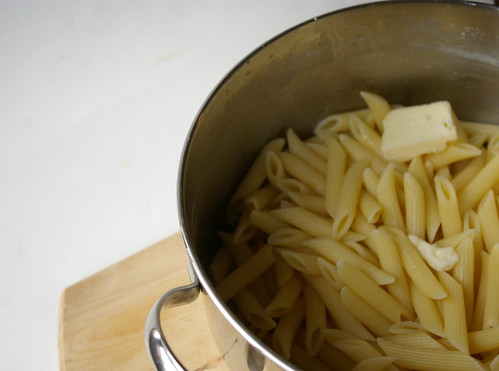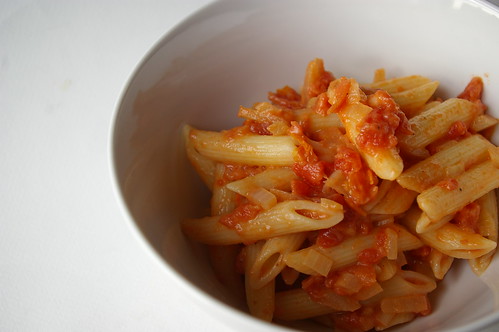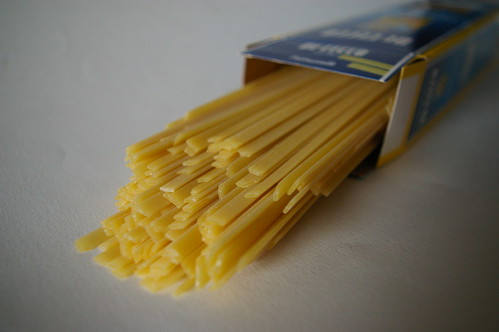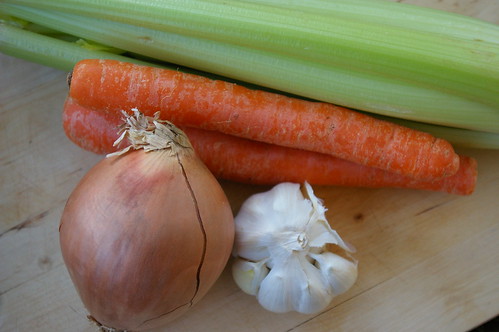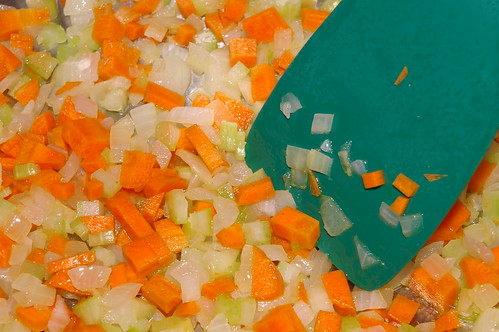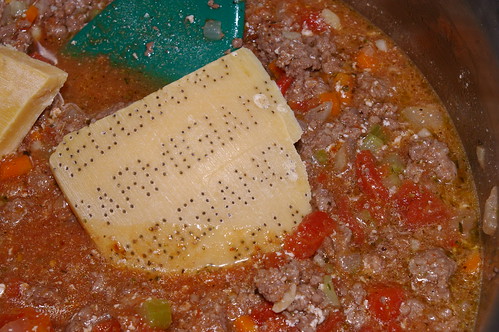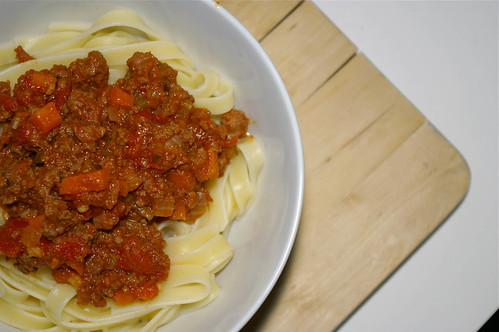I don’t remember how the idea even first formed, what the precipitating discussion had been, only that at some point the idea was arrived upon that a group of us should have a night eating fried chicken from a variety of spots around Calgary.
A fried chicken tour – or dine-around as we later called it – seemed like one of those ridiculous ideas that is so decadent that you kind of can’t not do it.
So we did.
Saying yes was a no brainer. After all, fried chicken is one of those dishes that inspire made cravings. That juicy meat, crackle-crisp breading, spices and herbs, all check the boxes for a dish worth yearning for.
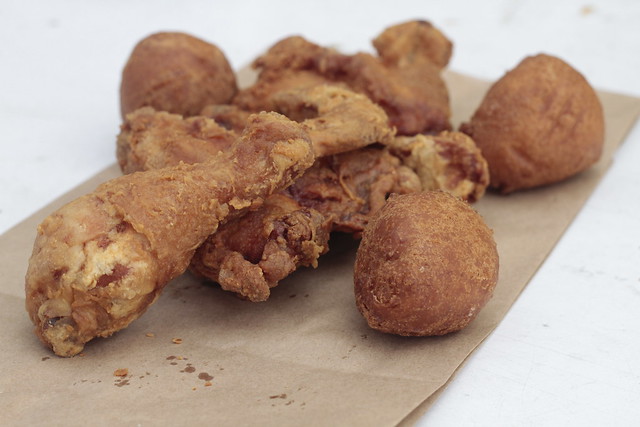
A selection from Chicken On the Way
The harder task was trying to narrow down the field from all the restaurants dishing up their versions of fried chicken around the city. Especially since – out of fear of heartburn or coronaries – we limited ourselves to four spots. Even that is not really for the faint of heart.
Chicken on the Way was a given, since it’s a Calgary institution and, well, the fritters are deadly good.
Cluck n’ Cleaver was added to the list as the newest on the scene.
And to cover off a variety of price points, we also wanted to include some sit-down restaurants, which meant Model Milk – which has been serving up fried chicken in some combination or another since it opened, including numerous iterations of southern classic combination chicken and waffles – and Anju which, while known maybe more for its yearn-worthy wings and sliders does offer large-format plates of fried chicken.
The original plan also included Olive Chicken, though I also love Ogam Chicken, which is down on Macleod Trail across from Chinook Centre.
In the end, we put those on the list for the inevitable round two of the Fried Chicken Tour.
I’ve dabbled in making fried chicken for a couple of dinner parties – where someone else was responsible for the waffles – and had a lot of success with recipes by Tyler Florence and J. Kenji Lopez-Alt – whose version I heartily endorse, as do my fellow dinner party diners.
A post shared by gwendolyn (@gwendolynmr) on
Dinner! Homemade chicken and waffles with bourbon syrup. Eff yes.
A post shared by gwendolyn (@gwendolynmr) on
I was mostly willing to tackle it because, well, I do love fried chicken and because the party hosts have one of those deep-fat fryers that’s all enclosed and maintains temperature and means no one is carefully watching a pot of boiling oil on a stove and dealing with splatter. Also, they cleaned up, so….
Because, as much as I love eating fried foods, I kind of hate cooking them. Though that may also be due to lack of experience (a chicken-and-egg situation, to be sure) and never quite getting the knack of keeping the temperature steady and so on.
Eating someone else’s fried chicken is so much easier.
With a date picked and an order selected, we set forth.
It started with Chicken on the Way.
After all, one should start at the beginning.
A few people questioned why we would include this spot, but for me there was no doubt it had to be part of the tour. They’ve been frying up chicken and fritters and fries for nearly 60 years; they’re a Calgary institution.
Although the goal was to not fill up on side dishes, we couldn’t resist the corn fritters which are satisfyingly crusty on the outside with soft, corn-studded interiors.
The chicken itself has a rather thin coating when compared to Korean fried chicken or even the robust crust on Cluck n’ Cleaver. But it’s nice and crisp and the chicken underneath is juicy enough.
This is straightforward, know-what-you’re-going-to-get fried chicken – which is likely why it has remained a part of Calgary’s dining scene for so long. (And has expanded to other Calgary locations and other communities, like Airdrie, Brooks and Edmonton.)
The tour was off to a good start.
A straight shot south on 14th Street lands you at the front door of Cluck n’ Cleaver, the fried and rotisserie chicken spot opened by Nicole Gomes, of Nicole Gourmet Catering (who is currently competing on Food Network Canada’s Top Chef Canada: All Stars) and her sister Francine.
Like Chicken on the Way, you can stop and enjoy your food in the space, but mostly it’s to-go orders. (And, perhaps dangerously, they do delivery.)
The “avoid ordering sides” decision went straight out the window here, as we tried three salads (coleslaw, black bean and corn, and a stick-to-your-ribs potato salad) along with biscuits and gravy. And a milkshake. Because why not?
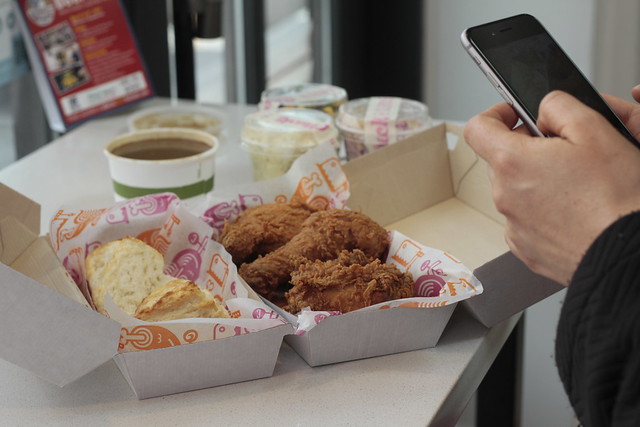
The camera eats first. At Cluck n’ Cleaver.
Where Chicken on the Way has a thin coating, Cluck’s is all thick and craggy with plenty of seasoning. Hiding beneath, deeply juicy chicken that counterbalances that crispy coating.
It’s excellent on its own but I wouldn’t stand in the way of anyone considering dipping some of that chicken into the gravy served on the side, which is also fantastic on the biscuits.
For an entirely different take on fried chicken – at least in terms of seasonings and spices – we then headed down 17th Avenue to Anju, home of some of the city’s most crave-able hot wings.
While a go-to order for me when stopping in, we forewent the gochujang wings for chef Roy Oh’s latest fried chicken creation, which he frequently changes to keep things interesting. There were only a few days left for the version then still on the menu, which was a spicy chicken topped with airy light honey-butter that melted into the crooks and crannies of the crispy skin. Alongside, a playful take on macaroni and cheese, but instead of pasta, Oh used rice stick.
Since the menu change was imminent, Oh also served up the newest iteration that is now on the menu: sriracha-brined fried chicken served with a black sesame-dressed salad. The cooling salad was a nice counterpoint to the hot chicken that, while spicy, didn’t blow out my tastebuds. (I’m, admittedly, a total spice wimp.)
No lie. We had to pause here for a bit before continuing.
Also no lie? I wasn’t sad because it meant time for one more Lock, Stock & Two Smoking Barrels – one of my favourite cocktails in the city. Into a smoked glass with a massive ice cube is a mixture of bourbon (yay!), ginger liqueur, sugar and bitters. So, it’s kind of like a super jazzed up Old-fashioned. (Also yay!)
I may enjoy trying all sorts of menu items while at Anju, but when it comes to the cocktail list, it’s Lock, Stock every time.
From Anju, it was a quick (much-needed) walk down to the other end of the block to hit up Model Milk.
Fried chicken has been on their menu almost since the beginning, but how it’s prepared and what it’s served with is constantly evolving. First, it came with grits, then waffles entered the picture. At one point, those waffles were deep-fried to be, essentially, donuts. (This was my favourite iteration of them all.)
The latest edition comes with fluffy, flaky biscuits, a wedge of iceberg salad and dill pickle coins whose acidic tang play nicely against the chicken.
This chicken had some kick, to be sure. The salad was soothing, though and I couldn’t get enough of those light biscuits.
Sorry. Not the best photo. Trust me, it looks so much better than this.
And so, some five hours later, the chicken dine-around came to a close. Amazingly – frighteningly – we were already discussing the next one as the plates were cleared.

